| Zeitschrift Umělec 2000/3 >> Internet Art vs. Art on the Internet | Übersicht aller Ausgaben | ||||||||||||
|
|||||||||||||
Internet Art vs. Art on the InternetZeitschrift Umělec 2000/301.03.2000 Michaela Vlková | media | en cs |
|||||||||||||
|
“The Internet is a self-organizing structure with plasmatic epicenters of activity, emerging from unexpected directions.”
Tilman Baumgaertel Composer Richard Wagner called for “synthetic” art in his notion of Gesamtkunstwerk. The Futurists demanded the dissolution of the institutional structures of art with all of their norms and regulations, as they longed for speed. At the time of the expansion of the radio, Bertold Brecht suggested the possibility of a home transmitter. In the 1970s, Simon Nora used the term “telematic” art in relation to computer telecommunication, or the automatic long distance transfer of information. In the 1980s, projects with the fax, (video)telephone (Eduardo Kac), and satellite began to appear. In 1984, Nam Jun Paik conceived of his vision of “satellite” art as art which aspires to attain “two-way communication between the opposite poles of the world” which concerned improvisation, feedback, indeterminism, the “empty places, in Cage’s sense of the phrase,” the equalizing of time zones and the differences among existing parallel cultures. Dreams and the program requirements of many different art movements have been fulfilled on the global computer network. Working on the Internet is something we have wanted to try for a long time now, declared American artist Maurice Clifford on the behalf of all. Art on the Internet It is, however, necessary to clearly separate art made specifically for the Internet from the mere publication of work existing in other media. Information and documentation sites indisputably represent an immense contribution to communication, education and new work methods by partially substituting for experiencing a work in physical space. Innumerable spaces exist on the Internet which work as electronic catalogues, for example Locus or Art on the Net (hosting pages for various artists, set up as a virtual studio). In these cases it’s somewhat possible to speak about “art on the Internet” or “non-web art” (a term from the Switch database). This also includes works for which the Internet is a supplementary medium as the works focus on performance, video etc., or for which the Internet expands installations by including the control and collection of data. In Liquid Cities by Michel Redolfi, in a pool on Ars Elecronica in 1997, sounds and voices collected via the internet echoed under water—a physical experience contrasting with the immaterial data and the absence of their creator. Internet Art (net.art) If a project is created directly on the Internet, creatively taking advantage of its means of communication, and if it is distributed on the Internet, it represents “Internet Art.” Only several years ago, Tilman Baumgaertel’s term net.art (network, or Internet art) stood for works whose subject matter was the medium itself, testing its limitations, experience with the web and computer esthetics. These days the notion of “net.art” defines all projects that cannot exist outside the Internet environment. Characteristic qualities of net.art include its immaterialism, relative omnipresence, permanent accessibility, the possibility of immediate change, and the long-distance transmission of information. Internet art, for the time being, has not become as “mainstream,” as Hannes Leopolder predicted it would at the end of the century, but last year’s exhibition Net_Conditions in ZKM (Zentrum für Kust und Medientechnologie) and the first exclusive net.art conference, Pleine-peau, aimed at paying attention to this kind of art. The art scene establishment noticeably attempts to occupy a position in this new medium. Museums like MoMA, the Whitney or the new London Tate have tried to catch up over the past several years in development by awarding grants for the production of their own web projects. They are aware that this is the only way they can avoid becoming completely obsolete in the near future. The attempts by physical institutions at “capturing” net.art in their local hard drives does not always work well, because the process of downloading information from the Internet is part of the whole concept, while in several cases the work’s address is the point (Olia Lialina, Igor Stromajer). The environment of the “personal” computer also carries meaning, in the possibility of individual entry and connection to other sites on the web. While it seemed at first that every attempt at hierarchy on the Internet was doomed, it appears today that this very hierarchical order is related to the process of evaluation, inevitably present while perceiving and evaluating art. The increase of information on the web also confirms the logic and indispensability of selective centers. After the original way of working in the mid-1990s of mainly dealing with personal web pages, we have returned to collecting information through hypertext interconnectivity. The classic structures of the museum and other institutions were replaced by more independent servers (Rhizome, Switch, Verybusy etc.) and partially edited discussion groups (Nettime, Syndicate, Wedartery, etc.). Although these net intersections also have their own set of criteria and values, it is easier and more pleasant to present a quality project here than through a physical institution. The Chelsea project is another alternative platform—3D virtual interactive space, which as one of 800 accessible worlds in the Virtualworlds’ server offers those interested in art a chance to create their own “gallery.” The more the Internet and multimedia (broadcasting, sound and interactive images) are becoming a part of everyday life, the better chance the new media art projects have at allegorizing today’s experience: the necessity of reassessing humans as individuals, social communication, planetary context, space, time, access to information as something changeable and multi-layered. New media enable “invisible aspects of our universe to become perceptible” just like “new levels of the imagination” (Frank Popper). Instead of adapting to the “new sensitivity to our complex satellite-computer connected environment,” we still continue to respond in our “antiquated Renaissance concepts of human experience,” says D. de Kerckhove. The known Internet activist Vuk Ćosić even declared that all art up to now was merely a substitute for the Internet. Does this mean that everybody should now only work on the web in net.art? What he did not realize was that each era has had different preferred media and that no “new” media has ever been successful at completely eliminating the development of the “old” (photography vs. painting, radio vs. live performances, or TV vs. the cinema). An attempt at classifying internet art seems illogical, but nevertheless it is possible to at least come up with a certain way of dealing with Internet means: browsers (Web Stalker, Shredder, Netomat), Internet activism (RTMArk: www.rtmark.com, Irational: www.irational.org, Jodi: www.jodi.org, Plagiarists: www.plagiarist.org), hypertext illustrated poetry, data structures (Shulgin, Mouchette, Superbad), sound projects (Sound Creatures, AudioRom), audio and video broadcasting (Xchange, orang), communication projects (S.Collins, Communimage), those focusing on the text (ASCII images and films [!] by Vuk Ćosić) and multimedia interactive projects (Melinda Rackham, Milica Tomić). Browsers The project Web Stalker (by I/O/D) unleashed a whole wave of alternative Internet art browsers two years ago, removing any absolutely given graphic layers, uncovering and liberating the flow of data. Web Stalker reveals to users the unseen structure of pages and enables a nonlinear method of viewing. The “spectator’s” interactivity is placed above the creator’s intentions. Shredder (the Deepdisc group) transforms found pages to constantly changing colored surfaces and scraps of broken-up text. Earshot is another project operating on a similar principle, looking up audio data on the Internet (sounds, music and the spoken word) and then mixing it into a never-ending interactive composition. Netomat by Maciej Wisniewski is based on text and looks for linguistically related data. It calls to mind the technology of automatic writing, wherein the web represents memory. These projects are not concerned with the exact transmission of information, but rather with the quality of the data and their esthetics. The result is an individual remix of multimedia data, not dissimilar to DJ music culture. Intervention—hackers, decoders and activists The group JODI and its chaotic virus-like projects are a prototype of the interventionist approach to the Internet. During one of their events, the computer’s desktop was copied into the foreground while it was being started up, giving the feeling of a virus or an error in the machine’s control system. Elsewhere they use the 404 symbol. (The page you requested could not be found.) Or in abstract and avant-garde interface they parody the well-known violent computer game Doom. Jodi “takes the code out from its functionality—a code like theater, like a hallucination” (Randall Packer). The group 0100101110101101.ORG who hacked several Jodi projects, got famous due to their action aimed against the elitist-conceived Hell.com, restricting access to their own art project. 0100101110101101.ORG copied data on the Hell server and offered free access to everybody. “The Web is a paradise for anti-copyright, plagiarism, confusion, and mutual exchange. Why must some people create a copy of the external world at any price?” (0100101110101101.ORG) Heath Bunting from Irational.org is acting against big multinational corporations, just like RTMark, which sponsors a number of sabotage activities. They instigated an intervention where Barbies in the Mattel factory were assembled with the voice of a monster figure from outer space. They advocate individuality and the sharpening of the senses as opposed to the passive consumption of information. Alexej Shulgin, a Moscow artist, is an interesting character on the web. He initiated the contest of Form Art, or art works made by using formal attributes from the web such as text, buttons, forms, etc. At the site FuckU-FuckMe (www.fufme.com) he offers a non-existent sexual Internet interface, and in his latest project he is bored and asks for inspiration on his website. According to professor Lev Manovich at the University of California in San Diego, these anarchist approaches divert attention away from artistic issues and towards social communication. Alex Galloway and Baumgaertel believe that the Internet test phase is over for net.art, at least in the form that has been apparent in the works by Shulgin, Jodi, Irational, etc. The latest tools such as Shockwave, Quicktime and Javascript enable high-tech projects that are no longer concerned with the structure and formal aspects of the Internet. Melinda Rackham’s projects, for example, fully use the latest technological gags without celebrating them. On the other hand, they are an example of one mature use of multimedia Internet means. Finally, I would like to mention two Czech net.art projects. Rose by Silver generates a new part of an abstract flower from the data of connected people. Each visitor leaves a trace. This is also true in the case of m-system by Kamila Richterová, in which positions in a system, based on the Prague metro system, are gradually being occupied, creating an unpredictably colored map of the originally cold system. Translated by Jeffrey A. Buehler vivid@avu.cz http://www.avu.cz/~vivid/netart (hypertext links to this article).
01.03.2000
Empfohlene Artikel
|
|||||||||||||
|
04.02.2020 10:17
Letošní 50. ročník Art Basel přilákal celkem 93 000 návštěvníků a sběratelů z 80 zemí světa. 290 prémiových galerií představilo umělecká díla od počátku 20. století až po současnost. Hlavní sektor přehlídky, tradičně v prvním patře výstavního prostoru, představil 232 předních galerií z celého světa nabízející umění nejvyšší kvality. Veletrh ukázal vzestupný trend prodeje prostřednictvím galerií jak soukromým sbírkám, tak i institucím. Kromě hlavního veletrhu stály za návštěvu i ty přidružené: Volta, Liste a Photo Basel, k tomu doprovodné programy a výstavy v místních institucích, které kvalitou daleko přesahují hranice města tj. Kunsthalle Basel, Kunstmuseum, Tinguely muzeum nebo Fondation Beyeler.
|







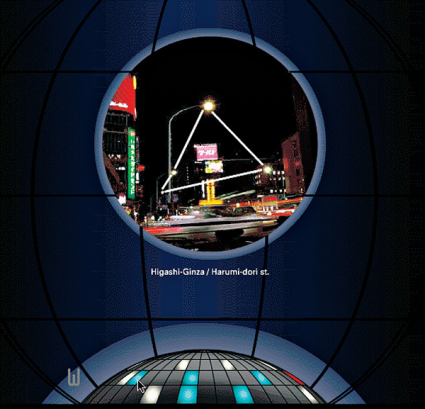
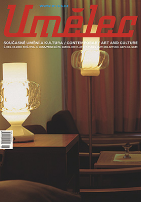























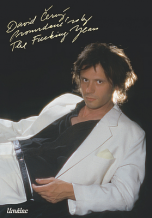
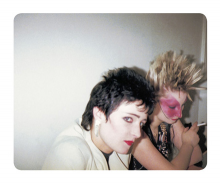
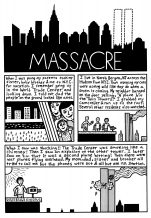



 Potsdamer Str. 161 | Neu Divus in Zwitschermaschine, galerie und buchhandlug in Berlin! | Mit U2 nach Bülowstraße
Potsdamer Str. 161 | Neu Divus in Zwitschermaschine, galerie und buchhandlug in Berlin! | Mit U2 nach Bülowstraße
Kommentar
Der Artikel ist bisher nicht kommentiert wordenNeuen Kommentar einfügen